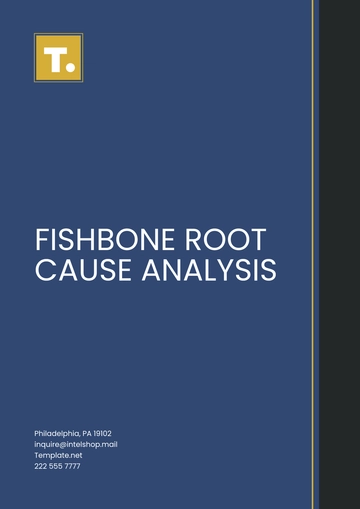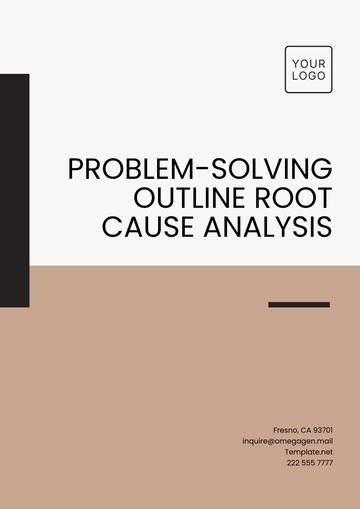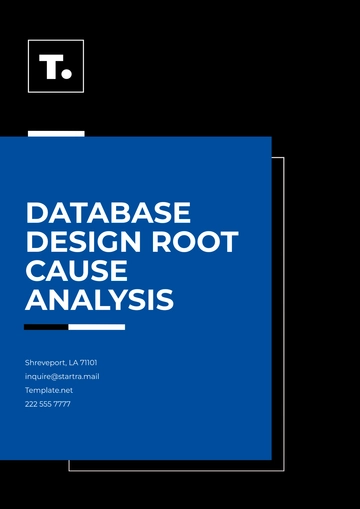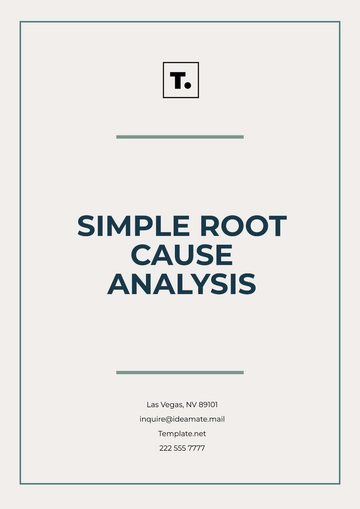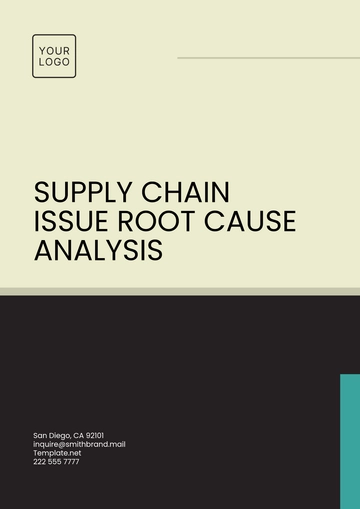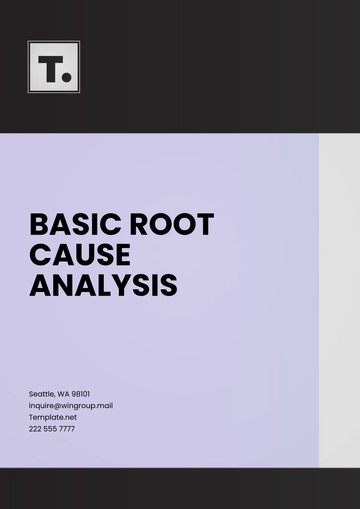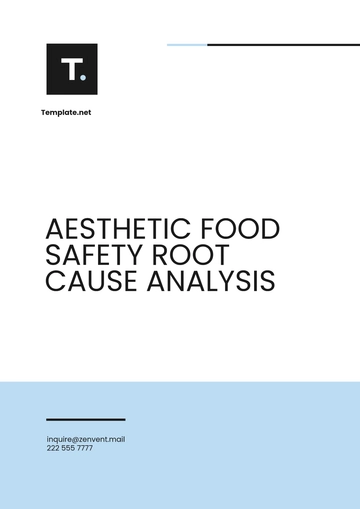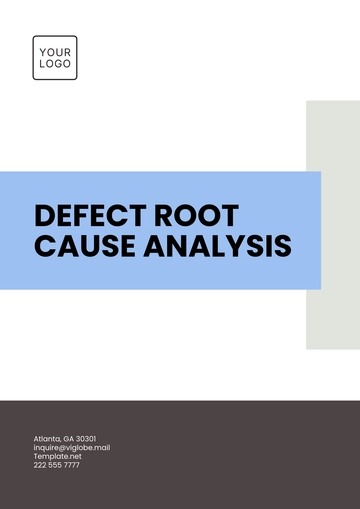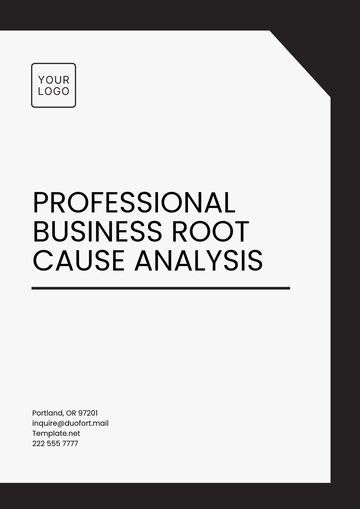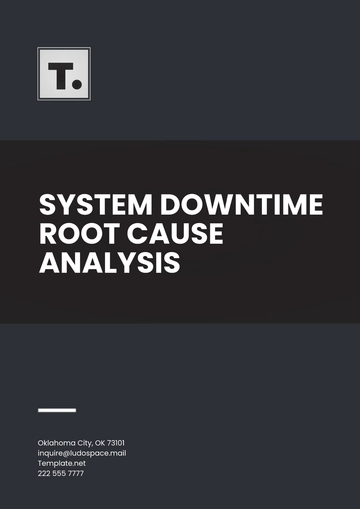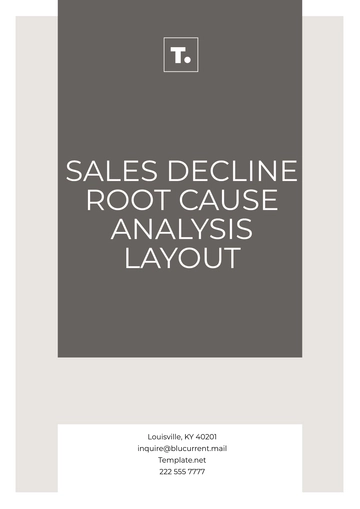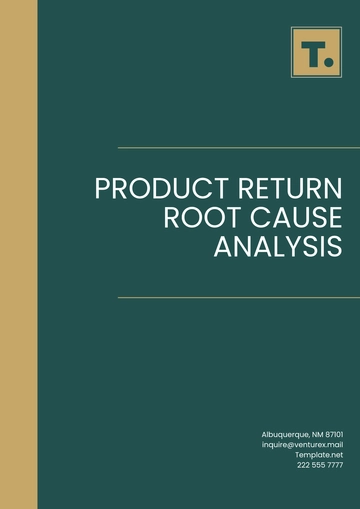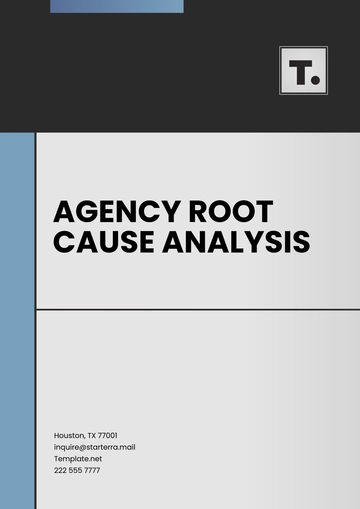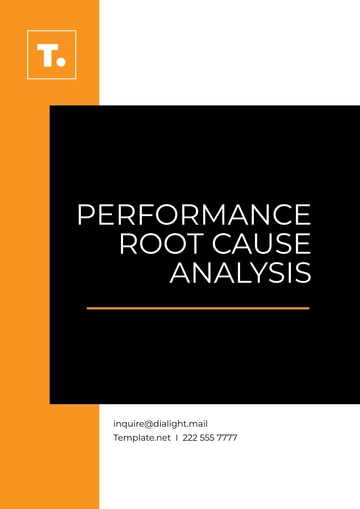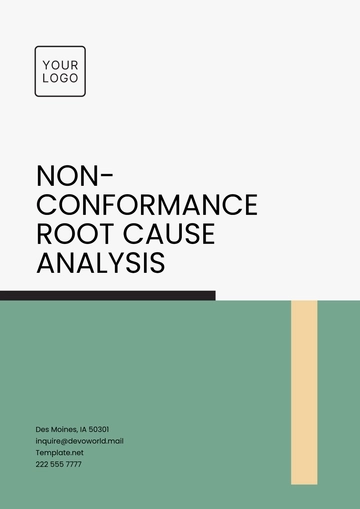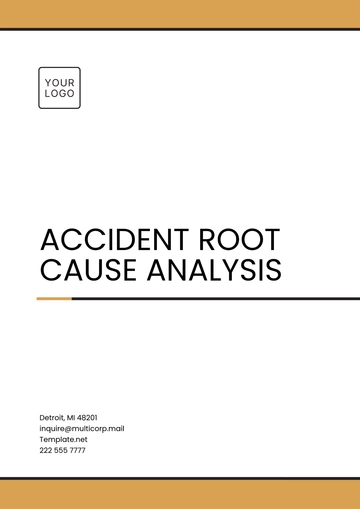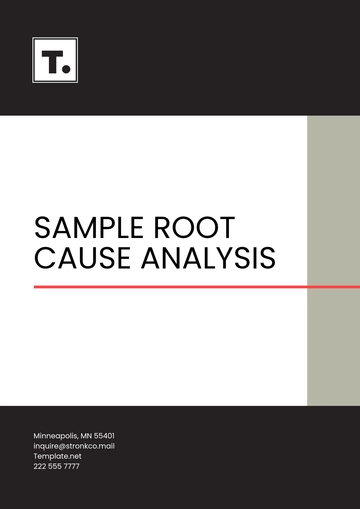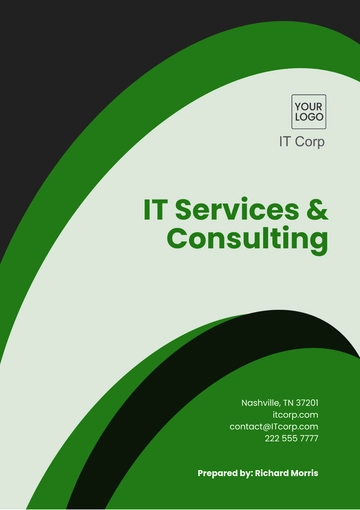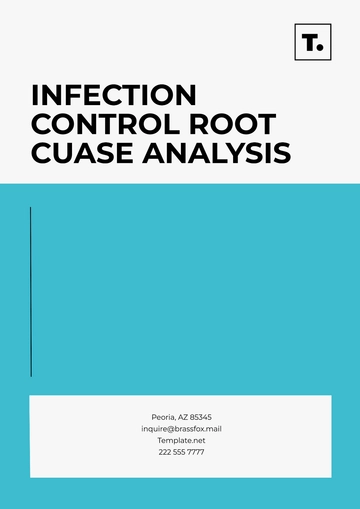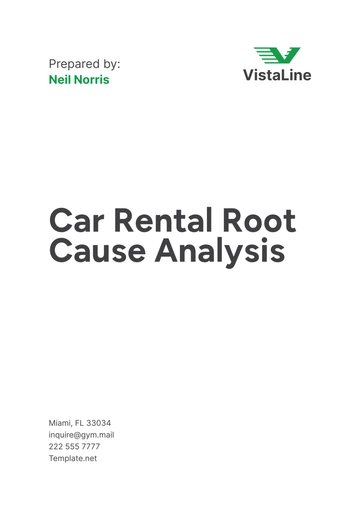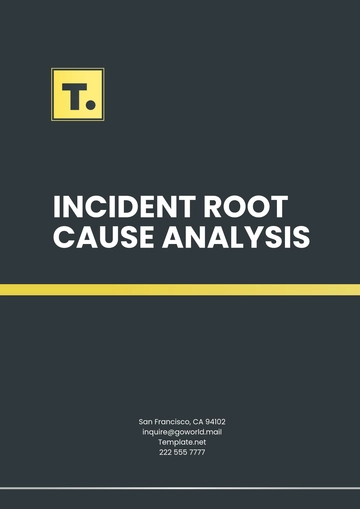Free Nursing Home Work Analysis
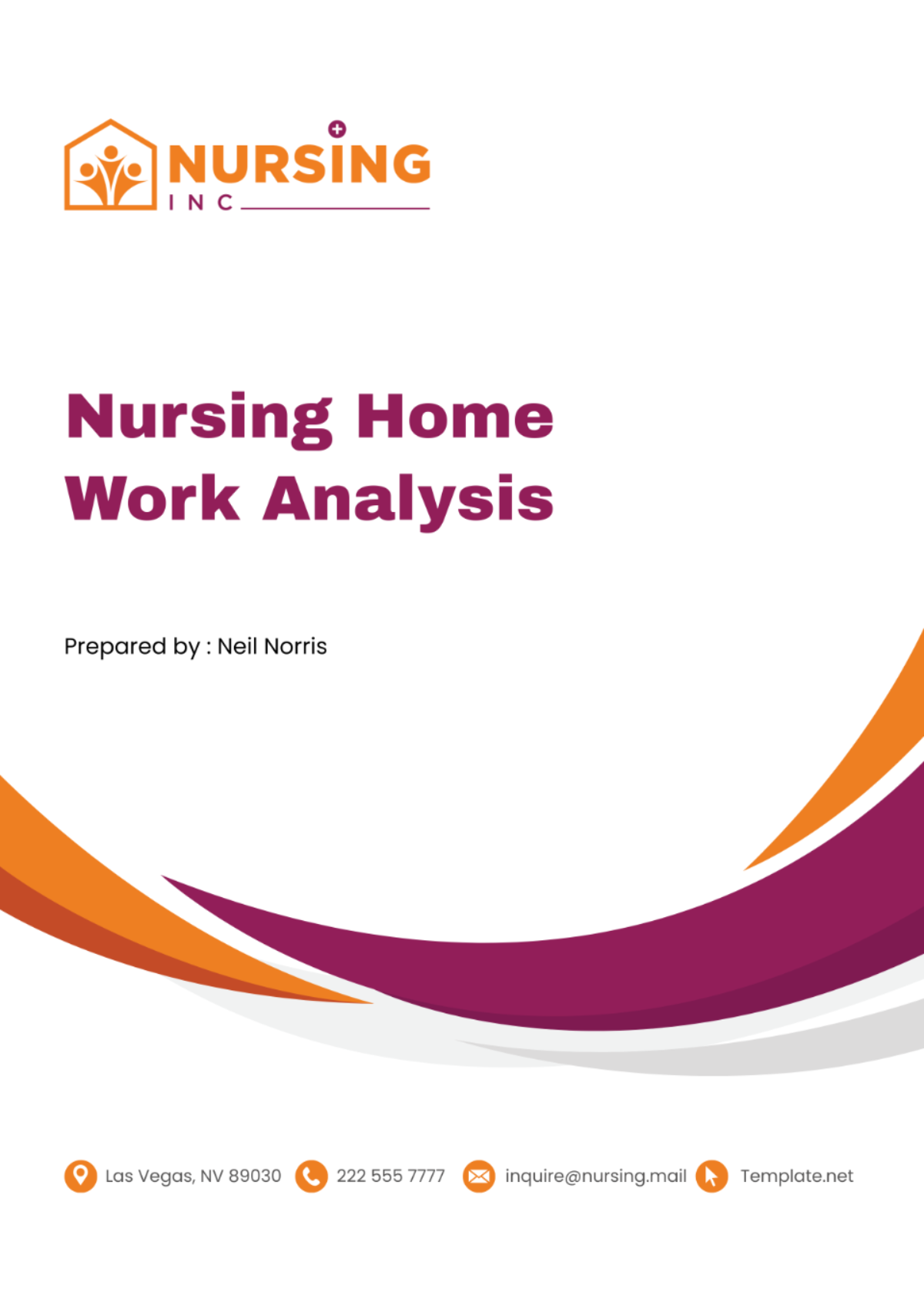
Introduction
This report presents a detailed work analysis of [Your Company Name] Nursing Home, focusing on its staffing, resident satisfaction, and financial performance from [2050 to 2052]. Aimed at stakeholders interested in the operational health and service quality of the nursing home, this analysis utilizes data-driven insights to evaluate the facility's performance across various critical metrics.
Company Overview
[Your Company Name] is a premier provider of long-term care, rehabilitation, and assisted living services. With a capacity of [150] residents, the facility is renowned for its commitment to high-quality care, personalized resident experiences, and innovative care practices. The nursing home employs a multidisciplinary team of healthcare professionals, dedicated to fostering a supportive and nurturing environment for all residents.
Methodology
The methodology section outlines the approach employed in this analysis, detailing the data collection, analysis techniques, and evaluative criteria used to assess the facility's performance across staffing, resident satisfaction, and financial health. This section aims to provide transparency and enhance the credibility of the findings presented in the report.
Data Collection and Analysis
The data for this report were sourced from a combination of internal records, resident surveys, and financial statements provided by [Your Company Name]. Staffing data were obtained from human resources records, including employee roles, qualifications, and turnover rates. Resident satisfaction metrics were derived from annual surveys that measured various aspects of the living experience, including care quality, facilities, and activities. Financial performance data were extracted from audited financial statements, focusing on revenue, expenses, and profit margins. The analysis period spans [three years (2050-2052)] to capture trends and enable a thorough evaluation of performance over time.
Analytical Techniques
The report employs quantitative analysis techniques to examine numerical data and identify trends. Statistical methods were used to calculate percentages, averages, and growth rates. Qualitative analysis was also conducted on resident feedback to capture insights into satisfaction beyond numerical ratings. This dual approach provides a holistic understanding of [Your Company Name] Nursing Home's operational effectiveness and resident experience.
Evaluative Criteria
The evaluation of [Your Company Name] Nursing Home's performance is based on the following criteria:
Staffing: Adequacy of staffing levels, qualifications of healthcare professionals, and turnover rates, as these factors directly impact care quality and operational stability.
Resident Satisfaction: Ratings and feedback on care quality, facilities, and services, indicating the effectiveness of the home in meeting resident needs and expectations.
Financial Performance: Revenue growth, expense management, and net profit margins, reflecting the economic health and sustainability of the facility.
This methodology ensures a systematic analysis, grounded in empirical data and aligned with industry best practices. The findings and conclusions drawn from this approach are intended to inform decision-making and strategic planning for [Your Company Name].
Staffing Analysis
This section delves into the comprehensive analysis of the staffing structure, examining the nuances of staff composition, qualifications, and turnover rates. The focus is on understanding how these elements synergize to affect the quality of care provided and the operational efficacy of the nursing home.
Registered Nurses (RNs):
Licensed Practical Nurses (LPNs):
Nursing Assistants (NAs):
Year | Total Staff | Annual Turn Over Rate |
|---|---|---|
2050 | 120 | 10% |
2051 | 125 | 12% |
2052 | 130 | 9% |
The staffing strategy at [Your Company Name] has been designed to ensure a high caliber of care and support for our residents. Over the analysis period, we observed a strategic increase in the number of Registered Nurses and Licensed Practical Nurses, reflecting our commitment to enhancing the quality of clinical care. The RN to resident ratio improved from [1:3.75 in 2050] to [1:3.33 in 2052], surpassing the national average and ensuring more personalized care.
Furthermore, we implemented a comprehensive staff development program, including continuous education and specialized training in geriatric care, which contributed to a decrease in the turnover rate from [12% in 2051] to [9% in 2052]. This reduction in turnover is indicative of a more engaged and stable workforce, which correlates with improved resident care outcomes and operational efficiency.
Resident Satisfaction
This section explores the levels of satisfaction among residents at [Your Company Name], based on a detailed analysis of annual survey results. The aim is to gauge the effectiveness of our services and facilities in meeting, and exceeding, resident expectations, thereby enhancing their quality of life.
Satisfaction Rating:
Aspect | 2050 | 2051 | 2052 |
|---|---|---|---|
Overall Care Quality | 4.5/5 | 4.6/5 | 4.7/5 |
Food and Nutrition | 4.2/5 | 4.3/5 | 4.4/5 |
Cleanliness and Maintenance | 4.3/5 | 4.4/5 | 4.5/5 |
Recreational Activities | 4.1/5 | 4.2/5 | 4.3/5 |
The annual resident satisfaction surveys reveal a progressive improvement in key areas such as overall care quality, nutritional offerings, facility cleanliness, and recreational activities. Notably, the satisfaction rating for overall care quality saw a year-over-year increase, culminating at [4.7/5 in 2052]. This uptrend is a direct reflection of our targeted initiatives to personalize resident care plans and increase staffing levels, particularly in specialized care roles.
Enhancements to the food and nutrition program, based on resident feedback, led to a notable increase in satisfaction in this area. Our partnership with a renowned culinary institute to train our kitchen staff and revamp the menu options contributed to this positive outcome. Similarly, investments in facility maintenance and expansion of recreational activities, tailored to resident interests and mobility levels, have significantly enhanced living conditions and resident engagement.
Financial Performance
This segment presents a nuanced analysis of the financial health and performance, emphasizing revenue generation, expense management, and profitability. The financial metrics underscore the facility’s economic resilience and strategic financial management in the face of industry challenges.
Financial Metric | 2050 | 2051 | 2052 |
|---|---|---|---|
Total Revenue | $5,200,000 | $5,400,000 | $5,600,000 |
Total Expenses | 4,000 | 4,200 | 4,300 |
Net Profit Margin | 23% | 22% | 23% |
[Your Company Name] Nursing Home's financial strategy is characterized by prudent revenue management and cost-control measures that have ensured sustained profitability. The period saw a consistent increase in total revenue, attributed to both an uptick in occupancy rates and the introduction of specialized care services that command higher fees.
Expense management initiatives, particularly in the realms of energy efficiency and procurement, have curtailed cost inflation, allowing the facility to maintain a robust net profit margin of over [22%] throughout the period. The slight increase in expenses in [2051] was effectively mitigated by strategic investments in technology that enhanced operational efficiency and reduced long-term operational costs.
Compliance and Quality Improvement
This section evaluates the compliance of [Your Company Name] with healthcare regulations and quality standards. It also highlights the facility's proactive measures in quality improvement and innovation in care delivery. The purpose is to underscore the nursing home's commitment to legal adherence, safety, and continuous enhancement of service quality, reflecting its dedication to excellence in resident care.
Analysis
[Your Company Name] has maintained an exemplary record of regulatory compliance over the analysis period, meeting and often exceeding the requirements set forth by healthcare oversight bodies. Key to our compliance strategy has been the implementation of an advanced electronic health records (EHR) system, which has enhanced the accuracy and security of resident data management, facilitating better care coordination and adherence to privacy regulations.
Additionally, the EHR system has enabled more effective tracking and management of medication administration, a critical area of regulatory focus. [Your Company Name] has launched several quality improvement initiatives aimed at elevating the standard of care and operational efficiency. These initiatives include:
Interdisciplinary Care Teams: Formation of specialized care teams comprising RNs, LPNs, therapists, and social workers to develop and implement comprehensive, personalized care plans for residents.
Resident Safety Program: Introduction of a state-of-the-art resident safety program, which includes fall prevention protocols, emergency response training, and regular safety drills.
Technology Integration: Adoption of innovative technologies, such as telehealth services and wearable health monitors, to enhance care delivery and resident health monitoring.
These measures have reinforced [Your Company Name]'s compliance with regulatory standards and have driven significant improvements in resident care quality, safety, and satisfaction. The focus on continuous quality improvement and innovation positions the nursing home as a leader in the field, committed to setting new benchmarks in healthcare excellence.
Recommendations
We present a series of strategic recommendations for [Your Company Name], aimed at addressing areas of potential improvement and capitalizing on opportunities for growth and enhancement of care quality. These recommendations are devised based on the analysis of staffing, resident satisfaction, financial performance, regulatory compliance, and quality improvement initiatives from [2050 to 2052].
Staff Development and Retention: Continue to invest in staff development programs, focusing on advanced training in geriatric care, mental health, and technology use in healthcare. Implement a comprehensive staff retention program that includes competitive compensation, career advancement opportunities, and work-life balance initiatives to reduce turnover rates further.
Expand Resident Engagement Programs: Further develop and diversify resident engagement and recreational activities, taking into account resident feedback and emerging trends in elder care. Consider the integration of digital engagement tools and virtual reality experiences to enhance cognitive stimulation and social interaction among residents.
Enhance Financial Management Strategies: Explore additional revenue streams, such as offering specialized rehabilitation services or partnering with academic institutions for research programs. Simultaneously, continue to identify efficiency improvements in operational expenses, focusing on sustainable practices that can reduce costs without impacting the quality of care.
Advance Technological Integration: Accelerate the adoption of healthcare technologies that can improve care delivery and operational efficiency. This includes expanding telehealth services, utilizing artificial intelligence for health monitoring and diagnostics, and integrating advanced security features for data protection.
Strengthen Regulatory Compliance and Quality Improvement: Establish a continuous improvement committee to oversee the implementation of quality initiatives and ensure ongoing compliance with healthcare regulations. This committee should also be tasked with staying abreast of changes in regulatory requirements and healthcare best practices.
Community Engagement and Partnerships: Enhance the nursing home's visibility and connection to the community through outreach programs, educational workshops, and partnerships with local organizations. These efforts can improve public perception, increase referrals, and provide residents with a sense of connection to the broader community.
Facility Upgrades and Expansion: Consider the feasibility of facility upgrades or expansions to accommodate a growing demand for services. Upgrades should focus on enhancing resident comfort, safety, and accessibility, while expansions could address the need for more specialized care units or increased capacity.
These recommendations are designed to guide [Your Company Name] in its pursuit of excellence and sustainability. By addressing these strategic areas, the nursing home can further enhance its service quality, operational efficiency, and financial health, ensuring its continued success and leadership in providing exceptional care to its residents.
Conclusion
The analysis of [Your Company Name] over the past three years underscores a trajectory of growth and improvement. The facility has successfully navigated the challenges inherent in the healthcare sector, reflecting in its staffing expansions, enhanced resident satisfaction, and solid financial performance. Stakeholders can be reassured of the nursing home’s dedication to sustainability and growth, promising a bright future for both its residents and employees.
- 100% Customizable, free editor
- Access 1 Million+ Templates, photo’s & graphics
- Download or share as a template
- Click and replace photos, graphics, text, backgrounds
- Resize, crop, AI write & more
- Access advanced editor
Enhance workforce efficiency with the Nursing Home Work Analysis Template, available at Template.net. This editable and customizable template offers a structured approach to analyzing work processes and staff deployment. Use our Ai Editor Tool to tailor this template, enabling you to identify areas for improvement and optimize workload distribution.
